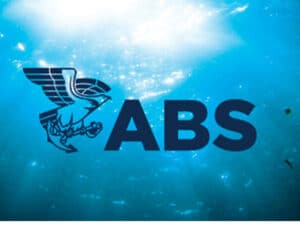
Maritime New Zealand cracks down on “thrill ride” operators
Written by Nick Blenkey Maritime New Zealand (MNZ) has cracked down on two high speed vessel operators following a series of what it describes as “serious back injuries to passengers.”
Maritime New Zealand (MNZ) has cracked down on two high speed vessel operators following a series of what it describes as “serious back injuries to passengers.”
In one case, Intercity Group (NZ) Limited, owners of the Paihia-based high speed vessel Excitor III, was sentenced March 7 in the Auckland District Court after earlier admitting two separate but identical charges under the Health and Safety in Employment Act (HSEA), relating to incidents in the Bay of Islands on January 12 and March 22, 2011 respectively.
In the second case, Seafort Holdings Ltd, the operator of the Bay of Islands-based high speed vessel Mack Attack, was charged after an incident on December 21, 2010 when a female passenger was thrown into the air during a thrill ride in Paihia and suffered serious spinal injuries.
MNZ has also charged the owner of Mack Attack, Richard John Prentice, in relation to a separate, close quarters incident on January 5, 2011. Mr Prentice has pleaded not guilty to the charge. His next appearance is set down for July 27 in the Kaikohe District Court
The two charges against Intercity Group, both under sections 15 and 50 of the HSEA of “failing to take all practicable steps to ensure no action or inaction of any employee at work harmed any other person” were brought by MNZ after an investigation into the two separate incidents, in which passengers suffered serious spinal fractures during trips to the Hole in the Rock. In the January 2011 incident, two female passengers at the rear of the vessel suffered fractured vertebrae after hitting large waves, while another female passenger suffered a fractured vertebra in similar circumstances on March.22.
Intercity Group was today convicted and fined NZ$50,000 for the first charge, and NZ$70,000 for the second charge. Two of the victims were awarded NZ$45,000 in reparation each, while the third, who suffered the most serious injuries, was awarded NZ$60,000.
MNZ Maritime Investigator Bruce McLaren said the most serious aspect of both cases was the company’s failure to react to concerns raised by passengers and staff, and to stop its operation in order to fully investigate the causes of the injuries.
“Despite at least four similar incidents between January and March 2011, including the two serious injury incidents investigated by MNZ, the company did not stop its operation to investigate what might be causing people to get hurt.
“In addition, even though the Excitor III was a new vessel, the company did not respond to concerns raised by passengers and one of its own skippers about the movement of the vessel. And, despite having clear knowledge of the kind of forces the vessel would be subject to, it did not take adequate steps to ensure its drivers were aware of driving the vessel appropriately to these conditions.”
MNZ subsequently suspended the vessel from operating following the March incident.
“The responsible course of action for Intercity following the first incident should have been to take the vessel off the water and keep it off the water, until such time as testing showed that the problem had been identified and properly controlled,” Mr .McLaren said.
“It’s a serious reminder to all operators of all high speed vessels and ‘extreme’ type thrill rides that they must continually be evaluating and adapting their safety systems and operating procedures to ensure they evolve alongside changes to their operation.”
In the Seafort Holdings Ltd. case, the company pleaded guilty to two charges under the Health and Safety in Employment Act (HSEA):
- under sections 15 and 50 of the HSEA, failing to take all practicable steps to ensure that no action or inaction of any employee while at work harmed any other person
- under sections 25 and 50 of the HSEA, failing to notify the Director of MNZ of the occurrence of serious harm as soon as possible after the occurrence became known.
Seafort was convicted and fined NZ$20,000 for the first charge and NZ$10,000 for the second charge. The company was also ordered to pay the victim NZ$90,000 in reparations.
May 7, 2012





Leave a Reply
You must be logged in to post a comment.